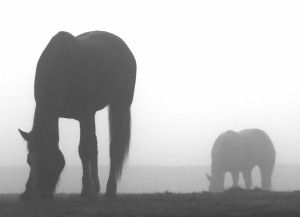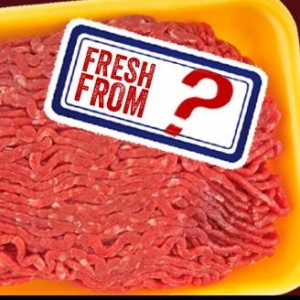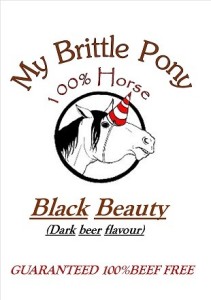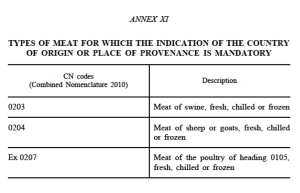Untraceable = unsafe?
Posted: February 22, 2014 Filed under: Enforcement, Food | Tags: enforcement, horsemeat, recall, safety Leave a comment » Dutch slaughterhouse Van Hattem suffering severe blow
Dutch slaughterhouse Van Hattem suffering severe blow
This week the Trade and Industry Appeals Tribunal, (in Dutch: College van Beroep voor het bedrijfsleven) rendered its judgment (interim injunction) in the lawsuit that was filed by slaughterhouse annex meat processing company Van Hattem Vlees B.V. against an administrative enforcement decision from the State Secretary for Economic Affairs.
Recall large amount of meat
In her decision, the State Secretary imposed an administrative order to recall all meat produced or processed by Van Hattem between 1 January 2012 and 23 January 2014 (approximately 28.000 tons of meat). The request to suspend the order to execute the recall was rejected by the Court. Why? First of all, horsemeat was detected by the Netherlands Food and Consumer Product Safety Authority (NVWA) in a lot of meat that was solely labelled as beef. This is a matter of fraudulent labelling and not of food safety (see also my other articles concerning labelling and the horsemeat scandal here and here). As the investigation continued, Van Hattem failed to clarify the origin and destination of several slaughtered horses. Read below how this is relevant for to the safety of the meat.
Horse passport
Horses in the EU require a passport for identification according to Regulation 504/2008. The slaughterhouse has to check whether a horse is indicated for slaughter in its passport. If so, an official veterinarian has to perform an inspection of the live horse. Without a passport and inspection the horsemeat can be declared unfit for human consumption. Also, information in the passport such as drug use, can result in disapproval of the intended slaughter for human consumption as residues of veterinary drugs can pose a health risk for humans.
The risk of dark horses
Van Hattem was not able to fully trace the processed meat and the company’s administration showed an unclear discrepancy between the amounts of received meat and the amounts that left the company. More horses were slaughtered than were inspected and approved for slaughter. The processing of (now) unidentifiable “dark” horses poses the risk that horsemeat unfit for human consumption ends up in food products for consumers, putting consumer health in jeopardy. The placing on the market of unsafe food is illegal according to Article 14 of Regulation 178/2002 (The General Food Law).
Was the meat in the case of Van Hattem indeed unsafe? Even though there was no evidence of unsafe food, the risk of unsafe food was sufficiently substantiated to consider the meat unsafe. Thereby an order to execute a recall was triggered based on Articles 17, 18 and 19 of the General Food Law (Article 14 is not mentioned by the Court). The Court does not place its bets on a dark horse. The Court ruled that although the order to execute a recall has a far-reaching impact on the business of Van Hattem, the order is proportionate given the circumstances.
Comparable decision re. Selten
In the ruling re. Van Hattem, the Court explained the relation between the specific circumstances and the risk of unsafe food. In a comparable judgment resulting in a recall of horsemeat, no such risk was pertinent per se. The case related to meat processing company Willy Selten B.V. The rationale for seizure in that case pertained to the facts that horsemeat was detected, which was not declared on the label and Selten’s business records could not be used to trace and identify the meat. The requested interim injuctions by this company were rejected twice (see here and here). But was there any indication that processed meat that was placed on the market was unsafe? In fact, there were not. The reasoning of the Court basically came down to stating that because the meat was untraceable, the meat was unsafe. The Court further added that it was almost certain that the veterinary drug phenylbutazone was present in one of the seized lots. But the presence of this drug poses no food safety issues according this joint statement from the European Food Safety Authority (EFSA) and the European Medicines Agency (EMA). See also this press release from the European Commission concerning phenylbutazone. In it’s conclusion, the Court in the Selten case referred to Article 14(6) of the General Food Law which reads as follows:
‘Where any food which is unsafe is part of a batch, lot or consignment of food of the same class or description, it shall be presumed that all the food in that batch, lot or consignment is also unsafe, unless following a detailed assessment there is no evidence that the rest of the batch, lot or consignment is unsafe.’
As set out above, in this case there was no indication of unsafe food, therefore the imposed order should have been lifted. It seems a tall order to base the order on Article 14 General Food Law as the requirement of unsafe food has not been fulfilled. In my opinion, the correct reasoning in this matter would have been as follows:
Untraceable = ?
Criminal prosecution
In the judgment re. Van Hattem, the Court mentions that the instrument of an order to execute recall has a far-reaching impact on the business of the company involved. In the case re. Selten, the company went bankrupt. Therefore, the instrument of recall should only be used if food safety is at stake. Especially in the case re. Selten, I have the impression that the administrative instrument of a recall is abused to punish the offenders and that the emotion and demand for action of consumers played a role here (I wonder if consumers would have responded differently if it were not horse but chicken that was mixed with beef, but that’s quite a different story). But the Court did have an escape. Without evidence of unsafe food, fraudulent labelling still constitutes a criminal offence and the offenders can be prosecuted for forgery under criminal law.
Developments
The supply chain of processed meats is complex and lengthy. The existing EU traceability systems are not adequate to pass on origin information, because the legislation is primarily based on the need to ensure food safety. The horsemeat scandal clearly showed this. The debate concerning COOL might therefore give rise to changes to the traceability systems and the proposed new Regulation on Official Controls aims to strengthen the enforcement of health and safety standards. Further, supermarkets in the Netherlands have announced to tighten the required certification for all suppliers. At end of this month the Global Food Safety Initiative will launch the module “Food Fraud”. The Dutch food industry federation (FNLI) welcomes this initiative and urges its members to add this module in their food safety system.
COOL update
Posted: January 7, 2014 Filed under: designation of origin, Food, Information | Tags: horsemeat, labelling, meat, processed meat Leave a comment »  As announced in the post of October 30, 2013, the European Commission was expected to table a report concerning mandatory country of origin labelling (COOL) for meat used as an ingredient. In December 2013 this report was published. The report weighs the need for the consumers to be informed, the feasibility of introducing mandatory COOL and provides a cost/benefit analysis including the impact on the single market and international trade. On the basis of the debate following this report, the Commission will consider what, if any, appropriate next step should be taken. Tabling a legislative proposal concerning COOL for processed meats is a possible outcome. What was in the report?
As announced in the post of October 30, 2013, the European Commission was expected to table a report concerning mandatory country of origin labelling (COOL) for meat used as an ingredient. In December 2013 this report was published. The report weighs the need for the consumers to be informed, the feasibility of introducing mandatory COOL and provides a cost/benefit analysis including the impact on the single market and international trade. On the basis of the debate following this report, the Commission will consider what, if any, appropriate next step should be taken. Tabling a legislative proposal concerning COOL for processed meats is a possible outcome. What was in the report?
Brief description of EU supply chain of processed meats and traceability
The EU meat processing industry represents more than 13.000 companies (Food Business Operators, FBOs) being mainly SME’s (90%). Products range from relatively simple meat preparations, e.g. fresh meat with spices, to sophisticated multi-ingredient foods. SME’s tend to change their suppliers more times a year to guarantee an adequate level of raw material at an affordable price. When the FBO process meat into (multi-ingredient) foods, these are then further sold to retailers/catering/butchers. Because of the variety of suppliers the FBOs of (multi-ingredient) foods use and the relatively small quantities they order, the FBOs do not have enough bargaining power to impose origin requirements to their suppliers. The supply chain of processed meats is quite complex and lengthy. The more complex the cutting and processing stages and the more advanced level of processing, the more complex traceability becomes. The existing EU traceability systems are not adequate to pass on origin information because the legislation is primarily based on the need to ensure food safety. Information to consumers is becoming more important, but food safety is still the core of EU food law. (see Article 18 of Regulation 178/2002 and Commission Implementing Regulation 931/2011 on the traceability requirements for food of animal origin). Because of the structure of the supply chain, the absence of a significant B2B interest in origin information and the inadequacy of the current traceability systems, the implementation of transmission of origin information to the consumer will be challenging.
Consumer interest in COOL
Despite challenging implementation, no less than 90% of consumers demand COOL for processed meat, but price and quality of meat are considered more important factors affecting consumer choice. Consumers would specifically like to know the country where meat was produced. The high percentage of consumers that want COOL could partly be caused by the horsemeat scandal, given the fact that the survey for the report took place in the midst of this scandal. According to the report, the consumer wants to be informed about the origin of meat, but does not want to pay for the additional costs that would be incurred in providing that information.
Three scenarios
The report is accompanied by a Commission Staff Working Document, which underpins the report. Further, an external study commissioned by DG SANCO by the Food Chain Evaluation Consortium (FCEC) has been undertaken. Results van be found here and here. The report describes three different scenarios:
- Maintain origin labelling on a voluntary basis (status quo);
- Introduction of mandatory labelling on the basis of a) EU/non-EU indication, b) EU/specific third country indication;
- Introduction of mandatory labelling indicating the specific EU Member State or specific third country.
For scenarios 2 and 3, different modalities of processed meats have been studied for the three main categories of the products concerned in an increasing order of processing. Scenario 2 is less informative than scenario 3, as scenario 3 provides more specific origin information. Please see below for a table concerning scenarios 2 and 3.
The scenarios examined
Scenario 1 would not raise any additional operational challenges but it would not provide a fully satisfactory solution to the consumer demand for origin information. In this respect scenario 2 and 3 would both be more desirable. However, scenario 2 would result in an increase in operating costs for FBOs up to 25% and may result in market segmentation and changes in international trade flows. It would also increase the burden on public authorities with 10-30%. Under scenario 3 the increased burden on public authorities is expected to be even higher along with an increase of 8-12% of the total production costs.
Table: Advantages and disadvantages of origin modalities under scenarios 2 and 3.
| Modalities under 2nd and 3rd scenario | Advantages | Disadvantages | |
| Category I: Meat preparations/mechanically separated meat | Country where ingredient was wholly obtained or country of last substantial transformation (Customs Code) | – Provides meaningful information to the consumer;- Trimmings and fat could be used as ingredients, where origin is determined as the country of the last substantial transformation. | – Additional traceability systems;- Implementation could be challenging if multiple origins are involved;- Trimmings and fat are not likely to be used as ingredients in cases, where origin is determined as the place of minimum rearing prior to slaughter, given the challenges in storage/traceability. |
| Place of minimum rearing prior to slaughter + place of slaughter | – Places more emphasis on the provenance of the raw material where the ingredient was not wholly obtained in one country. | – Additional traceability systems;- Implementation could be challenging if multiple origins are involved;- Trimmings and fat are not likely to be used as ingredients, given the challenges in storage/traceability. | |
| Category II: Meat products | Country where ingredient was wholly obtained or country of last substantial transformation (Customs Code) | – Places more emphasis on the place of processing where the country of last substantial transformation applies;- Technically feasible for FBOs;- More practical, if multiple origins are involved;- Trimmings and fat could be used as ingredients. | – Provides no information on the provenance of the raw material where the country of last substantial transformation applies. |
| Place of minimum rearing prior to slaughter + place of slaughter | – Places more emphasis on the provenance of the raw material where the ingredient was not wholly obtained in one country. | – Provides no information on the place of processing;- Additional traceability systems;- Particularly challenging where multiple origins are involved;- Trimmings and fat are not likely to be used as ingredients, given the challenges in storage/traceability. | |
| Category III: Multi-ingredient foods with meat used as an ingredient | Country where ingredient was wholly obtained or country of last substantial transformation (Customs Code) | – Places more emphasis on the place of processing where the country of last substantial transformation applies;- Trimmings and fat could be used as ingredients. | – Provides no information on the provenance of the raw material where the country of last substantial transformation applies;- Additional traceability systems;- Particularly challenging where multiple origins are involved. |
| Place of minimum rearing prior to slaughter + place of slaughter | – Places more emphasis on the provenance of the raw material where the ingredient was not wholly obtained in one country. | – Provides no information on the place of processing;- Additional traceability systems;- Particularly challenging where multiple origins would be involved;- Trimmings and fat are not likely to be used as ingredients, given the challenges in storage/traceability. | |
Final thoughts and more upcoming changes
The overall conclusion of the report is that consumer interest in COOL is strong, but this is not reflected in the willingness pay for the extra costs for FBOs and an additional administrative burden. Further, as set out in my previous post on this subject, COOL would not prevent fraud like the horsemeat scandal from happening again at all. While being informed about the origin of the meat, the consumer still risks receiving misleading information concerning the ingredient(s) itself. However, the horsemeat scandal did show that the current traceability systems are not adequate in case of incidents. In the aftermath of the horsemeat scandal, the debate concerning COOL might therefore give rise to changes to the traceability systems. More specifically, the discussion between the Commission, the Council and the Parliament concerning COOL may result in legislative changes that have an impact on your business. Aside the report discussed in this post, the Commission is also expected to adopt implementing rules on mandatory COOL for unprocessed meat of sheep, goat, pig and poultry, based on the New Labelling Regulation. Get informed and subscribe to updates from FoodHealthLegal (see section above ‘Tweets” on the right side of your screen) in order to stay posted!
New Labelling Regulation: more COOL?
Posted: October 30, 2013 Filed under: Food, Information | Tags: country-of-origin, horsemeat, information, labelling Leave a comment »Rumour has it that the European Commission will decide not to go for full country-of-origin labelling (‘COOL’) on all meat products in the European Union. According to globalmeatnews.com the European Commission is planning to recommend only partial country-of-origin labelling for fresh meats. This is not in line with the request of MEPs and EU ministers who have explicitly asked to beef up the new Labelling Regulation with better meat origin labelling for both unprocessed and processed meats. Why does the Parliament pressure the Commission to impose origin-labels on processed meat?
The reason for the Parliament’s pressure: the horsemeat scandal
The horsemeat scandal has been making headline news over the last year. It was a scandal caused by fraudulent labelling. Horsemeat was present in beef products and the consumer was not informed about this. For a Dutch perspective on the horsemeat scandal, see this article (in Dutch).
To restore consumer confidence and to improve controls the Commission has launched an Action Plan. COOL is part of the Action Plan and the Parliament has been pushing the Commission to adopt mandatory origin labelling for both fresh meat and meat in processed food (meat as an ingredient). In April, and later in September 2013, MEP Glenis Willmott urged the Commission to put rules on country-of-origin in place on ‘country of origin’ labelling for meat in ready meals and in processed foods. This month Health Commissioner Tonio Borg received a letter from MEP Agnès Le Brun to further pressure the European Commission for better meat origin labelling. The MEPs main arguments are that the horsemeat scandal highlighted the need for honest food labelling and by using COOL producers would have a much better grip on their supply chain.
Could COOL ensure honest labelling and prevent fraud?
In March 2013 Commissioner Tonio Borg answered this question in an interview. According to Borg the horsemeat scandal should be seen for what it is: a fraud rather than a demonstration of a regulatory gap. COOL would not necessarily create another hurdle for fraudsters: “(…) one could be honest about the origin but fraudulent about the labelling on the ingredients.” If you want to see the video of the interview, click here. I agree with Borg. The horsemeat scandal was a case of intended mislabelling, COOL will not prevent it from happening again.
Country-of-origin: current EU legislation
The current Labelling Directive only requires the place of origin or provenance to be mentioned on the label where failure to give this information might mislead the consumer (article 3(8)). In the EU, the origin must always be labelled for olive oil, fish (unless it is canned or prepared), beef, fresh or frozen poultry of non-EU origin, wine, most fresh fruit and vegetables, honey and eggs. For all other foods, origin labelling is optional.
New Labelling Regulation
According to article 26 of the new Labelling Regulation, indication of the country of origin shall be mandatory where failure to indicate this might mislead the consumer and for meat listed in Annex XI (see below).
The following steps have to be taken by the European Commission from now:
Autumn 2013 – Adopt a Commission report on the possibility to extend mandatory origin labelling of all types of meat used as ingredient in foods and take any necessary follow up action.
December 2013 – Adopt implementing rules on the mandatory origin labelling of unprocessed meat of sheep, goat, pig and poultry, based on the new Labelling Regulation.
December 2013 – Adopt implementing rules to prevent misleading use of voluntary origin labelling in foods, based on the Regulation on Food information to consumers.
December 2014 – Adopt Commission reports, based on the new Labelling Regulation, on the possibility to extend mandatory origin labelling to:
- other unprocessed meats not already covered by mandatory origin labelling rules, such as horse, rabbit, game meat etc.;
- milk;
- milk as an ingredient in dairy products;
- single ingredient foods;
- unprocessed foods;
- ingredients that represent more than 50% of a food.
So far, no official report from the European Commission on the meat labelling subject has been released, but it is expected to be published soon. Anyway, you will see an update here as soon as the report is published.
More COOL?
The Commission has not given a clear position on COOL yet, but if the rumours are true, the Commission is set to propose COOL for fresh pork, poultry and lamb. Compared to the current legislation, this results in more COOL because the requirements are being rolled out from beef to other meats, which will have an impact on the meat industry. But not totally COOL as the Parliament wants to see it. At this point it looks like COOL for processed meat will be rejected, which probably will be substantiated through an impact assessment. COOL for processed meat is likely to turn out to be too costly for the industry, and the consumer might not want to pay the price for origin information. Of course this is still speculative. Stay tuned for the update!


